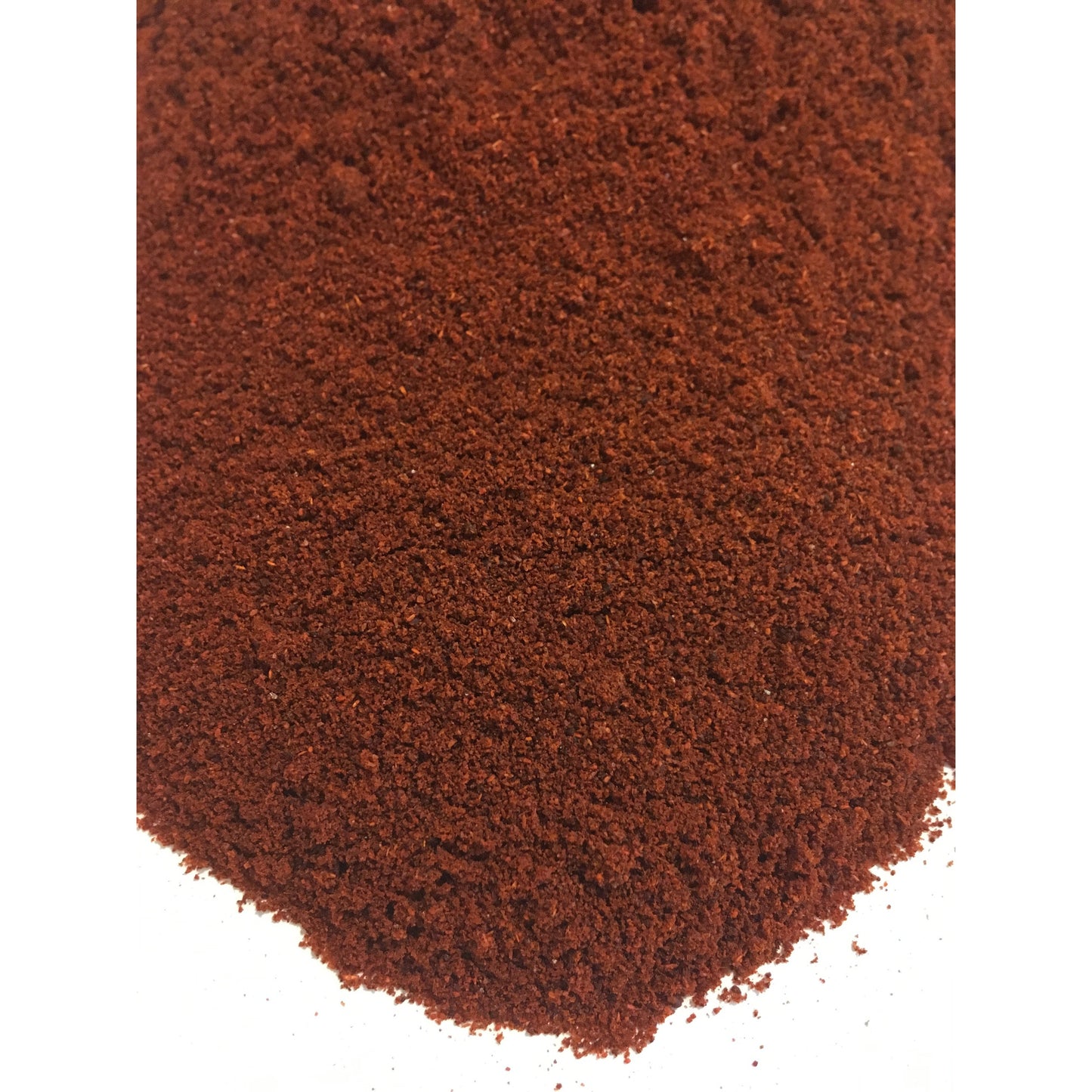Paprika, Hungarian Sweet
Paprika, Hungarian Sweet
Couldn't load pickup availability
Hungarian Paprika, Mild (aka Tahmira)
Paprika is used as an ingredient in numerous dishes throughout the world. It is principally used to season and color rices, stews, and soups, such as goulash, and in the preparation of sausages, mixed with meats and other spices. In the United States, paprika is frequently sprinkled raw on foods as a garnish, but the flavor is more effectively brought out by heating it in oil.
Hungarian national dishes incorporating paprika include gulyas (goulash), a meat stew, and paprikash (paprika gravy: a Hungarian recipe combining meat or chicken, broth, paprika, and sour cream).
In Moroccan cuisine, paprika (tahmira) is usually augmented by the addition of a small amount of olive oil blended into it.
The plant used to make the Hungarian version of the spice was grown in 1529 by the Turks at Buda (now part of Budapest, the capital of Hungary).
Central European paprika was hot until the 1920s, when a Szeged breeder found a plant that produced sweet fruit, which he grafted onto other plants.
The first recorded use of the word paprika in English is from 1896, although an earlier reference to Turkish paprika was published in 1831. The word derives from the Hungarian word paprika, a diminutive of the Serbo-Croatian word papar meaning "pepper", which in turn came from the Latin piper or modern Greek piperi. Paprika and similar words, peperke, piperke, and paparka, are used in various Slavic languages in the Balkans for bell peppers.
- packaged in zip lock bag


